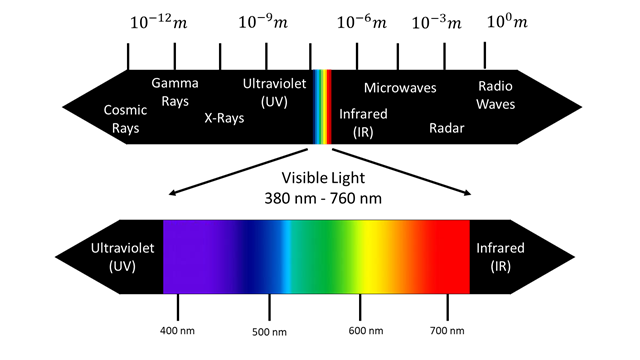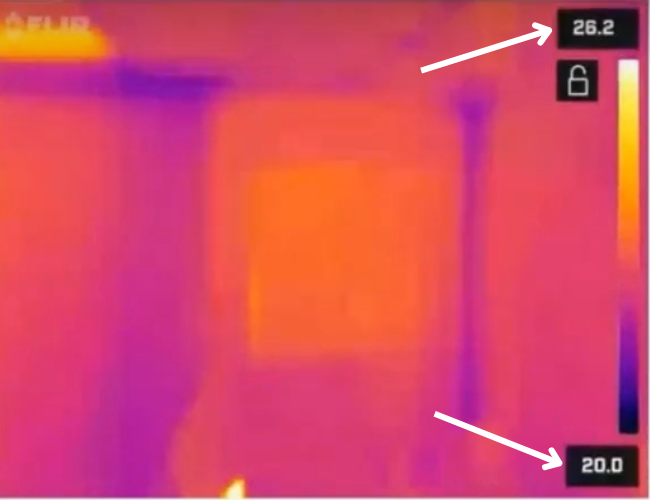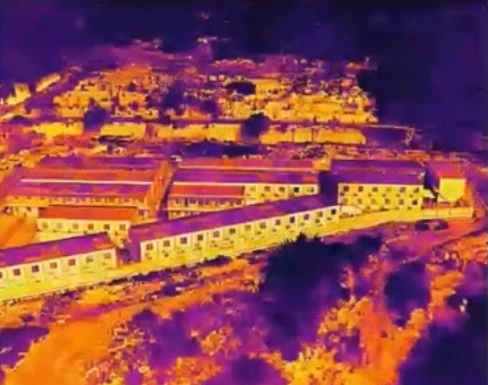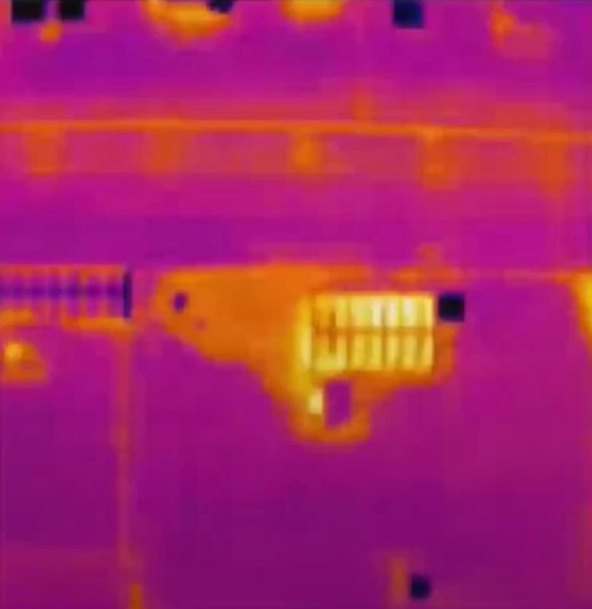Author – Matthew Sorrow
Heat, temperature, and infrared radiation play a vital role in analyzing and understanding building performance. Thermal cameras can identify building envelope issues and provide valuable information for building consultants. However, proper planning and execution of infrared thermography surveys are crucial to obtain accurate results. This article delves into the intricacies of these concepts and provides tips on adequately using thermal cameras to enhance building performance and sustainability. Understanding these concepts can be the key to better building envelope design and maintenance.
Heat and Temperature
Heat and temperature are closely related but not the same thing. Heat is the total amount of energy in a substance, while temperature is the concentration of that energy. All materials that have a temperature greater than absolute zero emit infrared radiation. The amount of energy in a substance and its temperature are inversely related as a substance’s energy is condensed into a smaller space, its temperature increases, and vice versa.
Temperature drives heat transfer, which is the movement of heat energy from one substance to another. Heat naturally moves from areas of high concentration (high temperature) to areas of low concentration (low temperature). If there is no temperature difference between two objects, they are in thermal equilibrium and no heat transfers between them.
Emissivity and Reflectivity
Emissivity is an object’s ability to emit radiation and is a property of the material, color, texture, and surface finish, and it measures on a scale of 0-1.0. Reflectivity, on the other hand, is a measure of an object’s ability to reflect radiation. Like emissivity, reflectivity is a property of the material, color, texture, and finish. Emissivity and reflectivity are inversely proportional, meaning that the higher an object’s emissivity, the lower its reflectivity, and vice versa. The sum of the two will always be 0.
Infrared Radiation
Infrared radiation (IR) is a section of the electromagnetic radiation spectrum with a wavelength longer than visible light, and it physically behaves like visible light but cannot be detected by the human eye. There is a strong correlation between IR intensity and temperature, meaning that the hotter an object’s temperature, the higher its IR intensity.

Infrared Cameras
Infrared cameras come in various sizes and prices, from small cell phone attachments to larger cameras with more features. They are designed to detect infrared radiation and have a sensor called a bolometer sensitive to IR radiation, similar to how a regular camera is sensitive to visible light. A bolometer detects IR intensity in one cell and assigns it a temperature value based on that intensity. However, it’s important to note that thermal cameras can only see IR, not temperature, and other factors can throw off that information. Like a traditional camera, you must appropriately configure settings and equipment to obtain a quality image that provides valuable information for analysis and interpretation.
F.O.R.D.S.
When using an infrared camera, it’s essential to keep the following four factors in mind as these cannot be changed in post-production once the photo is taken:
Focus: The images must be in proper focus
Orientation: The image must be appropriately oriented to the camera
Range: The temperature range sensitivity must be correctly set for the photographed subject
Distance: The distance must be correct to capture the data
Span: The temperature span must be sufficient to see gradients in the image. If it’s too large, the image will appear washed out; if it’s too small, small shifts will appear as bright contrasts, resulting in false positives.
Span Variation Example:

Span too large, resulting in washed out image

Span properly calibrated to provide good thermal detail
Relationship between Resolution and Distance
Distance is more important in capturing quality images with thermal cameras. Thermal cameras have a much smaller resolution than visual light cameras due to limitations in sensor technology. Higher-resolution cameras offer sharper thermal images but at a substantially higher price point. The lower the camera’s resolution, the closer to the target you must be to capture the same level of detail.

Low-resolution cameras hide detail as distance to the subject increases

High-resolution cameras provide more thermal detail, but at a higher price point
Thermal Camera Tips
Thermal cameras are sensitive instruments, and handling them with care is essential. Never point them at the sun, as it can damage the lens. Also, never point thermal cameras on shiny surfaces like metal or glass that reflect the sun. Do not touch the camera lens with any materials other than approved ones.
To take a thermal image, set the camera to the proper range, typically the lower of the two options (-40C to 120C). Also, set the camera’s focus, distance, and span correctly. When taking the image, try to minimize any reflections or shadows on the subject, as these can affect the accuracy of the temperature readings.
Below is an example of the damage the sun can have on an IR camera. The spot in the lower right is burned into the camera and will appear on any following images the camera takes:

Infrared Thermography Surveys for Building Envelope Consulting
Infrared (IR) surveys can be a valuable tool for building envelope consulting, and one can use them to diagnose issues such as water penetration, insulation, and air movements. Thermal cameras capture images of a building’s thermal behavior, and consultants can identify areas of concern by analyzing the temperature variations in these images.
However, it’s important to note that IR surveys require proper planning and conditions to ensure accurate results. Surveys should be conducted starting 30 minutes before and after sunset, as the rapid cooling during this time creates the thermal loading needed for clear visuals. Surveys should also be conducted 24-48 hours after a standard rain event if a wall has been dry. You will not see any hidden water buildup since it will have had time to dry.
One can wet a wall or rooftop to mimic rain before an IR survey in arid areas where rain events are uncommon. It’s essential to use a large amount of water to properly simulate a rain storm, as a small amount of water may evaporate before seeping into problem areas of a building.
Overall, infrared thermography surveys can be a valuable tool to help identify and diagnose building envelope issues and can be used in conjunction with other diagnostic techniques to assess a building’s condition comprehensively. However, proper planning and execution of the survey are essential to ensure accurate results.
Examples

This image is a roof taken from drone footage. The yellow rectangle in the center is a skyline. The anomaly shown is the orange organic shape surrounding the skyline. As the roof cooled off at sunset, most of the roof turned purple as it cooled. The orange section showed water intrusion retaining heat as the rest of the roof cooled. Further investigation revealed this assessment was accurate.

Some images may appear to have anomalies, but upon further investigation, they are non-issues. The elongated purple area shown on this roof may appear to be pooling water or some other problem with the roof. However, the fact that these are parallel indicates that a shadow caused the temperature change shown simply from the shadow changing as the sun set.
Thermal imagery is only useful when studied by an experienced professional. It is instrumental in the proper context but can create false flags if not correctly interpreted.
Final Thoughts on Infrared Thermography
Heat, temperature, and infrared radiation are all crucial concepts for understanding and analyzing a building’s thermal behavior. Thermal cameras can help identify issues in a building’s envelope, and proper planning and execution of infrared surveys are necessary to obtain accurate results. Emissivity and reflectivity are also critical properties of materials that affect how much radiation they emit or reflect.
Building envelope consulting services like ours at BE-CI can provide expert analysis of these concepts and use thermal cameras to optimize building performance and sustainability. If you want to improve your building’s performance and energy efficiency, consider using our building envelope consulting services and infrared surveys to identify and address any issues in your building’s envelope.
